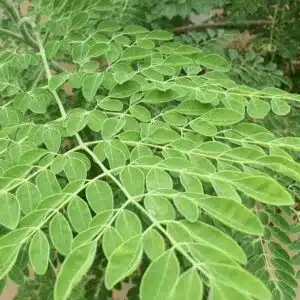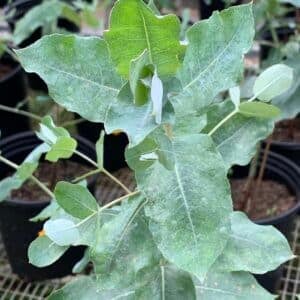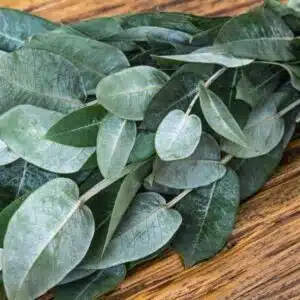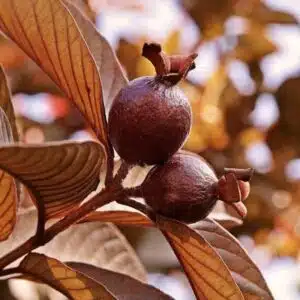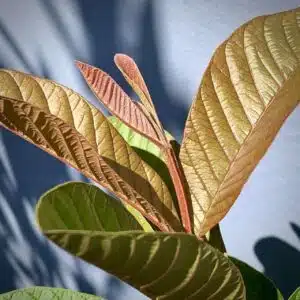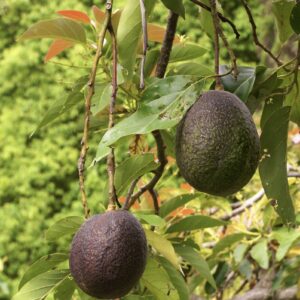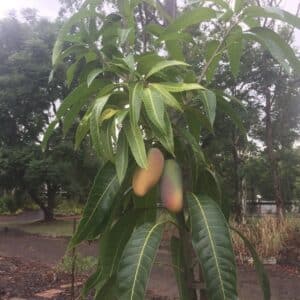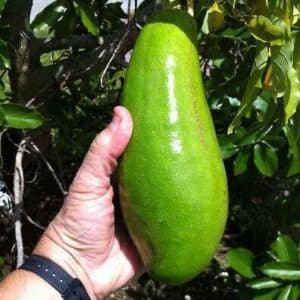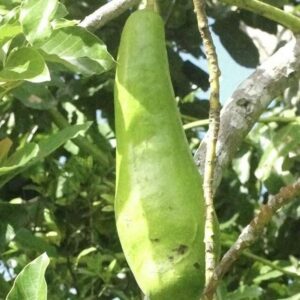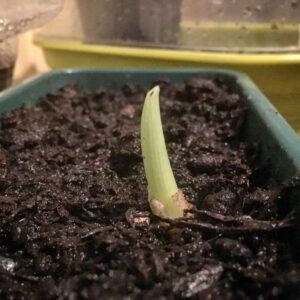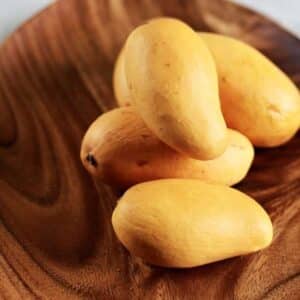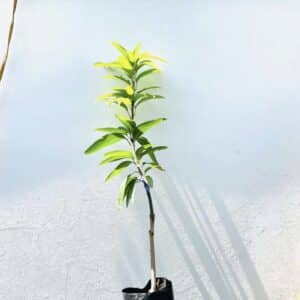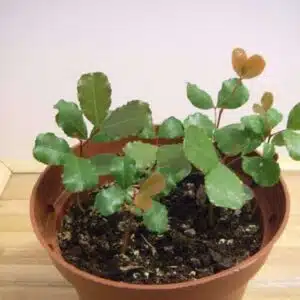Miracle tree / moringa (Moringa oleifera) live plant 3’-4’ tall
Moringa tree, also known as the "Miracle Tree," is a fast-growing, deciduous tree that is native to India, but is now widely grown in tropical and subtropical regions around the world. It can grow up to 10 meters tall, but is often pruned to a more manageable size for gardens and farms.
Moringa tree is prized for its highly nutritious leaves, which are packed with vitamins, minerals, and antioxidants. The leaves can be eaten fresh, cooked, or dried and powdered, and are commonly used in traditional medicine to treat a variety of ailments. The seeds of the tree are also edible, and can be pressed for oil or eaten fresh.
The leaves of the Moringa tree are rich in vitamins A, C, and E, as well as calcium, potassium, and iron. They also contain high levels of antioxidants, which help to protect the body from damage caused by free radicals. This makes Moringa tree a popular superfood and a valuable addition to any diet.
To care for your Moringa tree, it is important to plant it in well-draining soil with plenty of organic matter. The tree prefers full sun, but can tolerate partial shade. Water the tree regularly, especially during dry periods, but be careful not to overwater, as this can lead to root rot. Fertilize the tree every few months with a balanced fertilizer to promote healthy growth.
Moringa tree is also easy to propagate. You can grow it from seeds or cuttings. To plant Moringa seeds, soak them in water for 24 hours before planting in well-draining soil. Keep the soil moist until the seedlings emerge. To plant cuttings, simply take a stem cutting and plant it in moist soil. Keep the soil moist and the cutting will root and grow.
In addition to its nutritional and medicinal benefits, Moringa tree is also an environmentally friendly plant. It is drought-resistant, making it a valuable crop in areas with limited water resources. It also has a deep root system, which helps to prevent soil erosion and improve soil fertility.
In conclusion, Moringa tree is a valuable and versatile plant that offers a range of health benefits, is easy to care for, and is environmentally friendly. Whether you are looking to add a new crop to your farm, or simply want to grow a nutritious and beautiful tree in your backyard, Moringa tree is an excellent choice.
Red Guava tropical fruit tree 12”-24”
Grafted Mango Tropical live tree Kent 3’-4’ tall
Grafted Mango 'Kent': A Taste of Tropical Excellence
Mango 'Kent' is one of the most beloved and esteemed mango varieties globally, known for its exceptional taste, vibrant color, and versatility in culinary applications. When grafted, the 'Kent' mango tree combines the desirable qualities of the 'Kent' variety with the benefits of grafting, ensuring a consistent and high-quality fruit production. In this guide, we'll explore the 'Kent' mango, its characteristics, care requirements, and why grafting is an excellent choice for mango enthusiasts.
**Interesting Fact about Grafted Mango 'Kent'**:
The 'Kent' mango variety, including its grafted counterparts, owes its name to a place far from its tropical origins. 'Kent' mangoes were named after Kent, a county in England, where the variety was first propagated in the early 20th century. This English connection may seem surprising for a tropical fruit, but it highlights the global reach and appeal of mangoes. The 'Kent' mango, with its sweet and exotic flavors, quickly gained popularity worldwide, becoming a favorite not only in its native regions but also in countries with significantly different climates, such as England. This fact underscores the universal allure of the 'Kent' mango and its ability to delight taste buds across the globe.
Grafted HASS Avocado (Persea americana) tropical live fruit tree 12”-24”
Hass Avocado Tree - A Bounty of Creamy Delights
The Hass Avocado, celebrated for its rich, creamy fruits, offers not only culinary versatility but also the joy of nurturing a thriving fruit tree.
Interesting Fact
One captivating fact about the Hass Avocado is that it's the most widely cultivated avocado variety globally. It owes its name to Rudolph Hass, a California postman who first discovered and propagated this exceptional avocado in the 1920s. Renowned for its creamy texture and rich, nutty flavor, the Hass Avocado has become a favorite ingredient in salads, guacamole, sandwiches, and various culinary creations.
Mango Mahachanok (mangifera ) tropical fruit tree 12″-24″
Mango Tree, showcasing the Mahachanok variety, is an excellent addition to any garden or landscape. This tree offers the delightful taste and quality of Mahachanok mangoes, known for their sweet, tangy, and tropical flavor.
Interesting Fact about Mahachanok Mangoes:
One fascinating fact about Mahachanok mangoes is that they originated in Thailand, where they are highly esteemed. In Thai culture, the mango is often considered the “king of fruits,” and Mahachanok mangoes are among the royal favorites. The mango’s rich history in Thai tradition adds a layer of cultural significance to its exceptional taste and popularity.
When you purchase a fruit tree from us, rest assured that we prioritize swift and efficient delivery. Following the receipt of your payment, we dispatch your tree the very next day through USPS, ensuring a quick transition from our care to yours. Our fruit trees are not only certified by the USDA, guaranteeing their quality and adherence to stringent agricultural standards, but they also come with a 30-day guarantee. Should you encounter any issues within this period, please don't hesitate to contact us at the number provided above. For a faster resolution, we recommend sending pictures or explaining the situation with your order number. This allows us to understand the issue fully and take the necessary steps to make things right for you.
Lady finger banana (Musa acuminata) fruit tree living seedling
Lady Finger banana trees, also known as Musa acuminata, are an excellent addition to any garden or landscape. Not only do they provide tasty, nutritious fruit, but they also add a touch of tropical beauty to any setting. These trees are easy to grow and care for, making them a popular choice among gardeners and fruit tree enthusiasts.
Big Grafted mango (mangifera) tropical live fruit tree 3’-4’ ataulfo
Grafted mango Ataulfo is a unique variety of mango that is highly sought after for its sweet, rich flavor and buttery texture. If you're looking for a delicious and exotic fruit to add to your garden, this is the one for you!
One of the main benefits of grafted mango Ataulfo is that it is a grafted tree, which means that it has been carefully grown by joining the stem of one plant to the rootstock of another. This process creates a stronger, more disease-resistant tree that produces larger and more flavorful fruit.
Bilimbi Cucumber Tree (averrhoa bilimbi) live fruit tree 1’-2’ feet tall
The Bilimbi Fruit Tree, also known as Averrhoa bilimbi, is a tropical fruit tree that is native to Southeast Asia and is grown throughout the tropics for its tart, sour fruit. The Bilimbi tree is a small to medium-sized evergreen tree, which is easy to grow and care for, making it a popular choice among gardeners and home fruit growers. In this description, we will discuss how to plant and care for Bilimbi Fruit Trees, and some of the benefits they can provide.
An interesting fact about Bilimbi Fruit is that it is a rich source of oxalic acid, which gives the fruit its distinctive sour taste. Additionally, the acid in Bilimbi Fruit can be used in various cleaning and polishing applications, such as removing rust stains or shining brass and copper. This versatile fruit is not only delicious and nutritious, but can also be a helpful household tool.
Algarroba / Carob (Ceratonia siliqua) Live Tree 12”-24”
Ceratonia siliqua, commonly known as the carob tree, is a small to medium-sized evergreen tree that is native to the Mediterranean region. The tree produces large, dark brown pods that contain a sweet, edible pulp. The pods are often used as a chocolate substitute in baking and confectionery. In this description, we will discuss how to plant and care for a carob tree, and some of the benefits it can provide.
An interesting fact about carob trees is that they have been cultivated for over 4,000 years, and were known to the ancient Greeks and Romans. The pods of the carob tree were used as a form of weight measurement, and were known as "carats," which is the origin of the term used to measure the weight of gemstones. Carob trees were also a symbol of fertility and abundance in ancient cultures, and were often used in religious ceremonies and rituals. Today, carob is used as a healthy and natural substitute for chocolate, and is popular with those who have allergies or sensitivities to traditional chocolate. Carob pods are also used as a natural sweetener, and contain no caffeine or theobromine, making them a safe and healthy alternative to coffee and tea.


